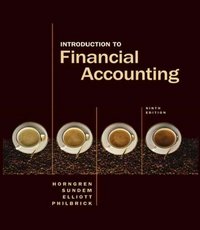asap please
Belly Ltd is a Malaysian based company that prepares its financial statements using Malaysian GAAP. The company's financial results at 31 December 2019 were as follows: Net profit $1,200,000 Shareholder's Equity 8,000,000 Total Assets 9,200,000 Net cash flows from operating activities 1,900,000 Belly Led has expanded its operations into Australia and is considering raising capital in Australia. Belly Led approached a private venture capital firm for a $6,000,000 loan. The venture capital firm uses a ratio to assess the Company's ability to generate cash flows from operations. The ratio is as follows: . Net cash from operating activities to net profit ratio [net cash from operating activitieset profit]. . The generally acceptable ratio is 1.5. You as the accountant of Belly Led, have noted the policy differences between the accounts which have been prepared based on Malaysian GAAP in Malaysia and what is required under IFRS in Australia. The venture capital firm uses IFRS as a basis for its decisions. Additional Information: 1. The company used the LIFO method for inventory valuation. IFRS only permits the use of FIFO method. The inventory valuations for the current and previous period are as follows under the two methods: Current Period Previous Period LIFO $750,000 $950,000 FIFO $550,000 $680,000 2. The company engages in research and development activities and during the current financial year it paid $400,000 for research and development. It had capitalised the entire amount in its Balance Sheet (Statement of Financial Position) and recognised it as an asset. However, $200,000 of the total amount does not qualify to be capitalised under IFRS and needs to be expensed and recognised in the Statement of Profit or Loss. 3. Interest received of $600,000 have been included in cash flow from operating activities. Traditionally, interest received was classified as a financing activity and the company does not have any significant reason for a policy change. 4. Four years ago the company had acquired goodwill in a business combination. The amount of Goodwill was $600,000. The company amortises goodwill over a ten year period. An amortisation expense of $60,000 was recorded in the current period as well as total accumulated amortisation of $240,000 for the four years. IFRS does not permit amortisation of goodwill. December 2019. 5. The company had invested in 500,000 shares in a listed company which were purchased at $2.00 at the beginning of this year. The shares were trading at $1.90 on 31 Required: Will Belly Led be able to obtain the financing from the Australian venture capital firm? Show all calculations. (15 marks)







